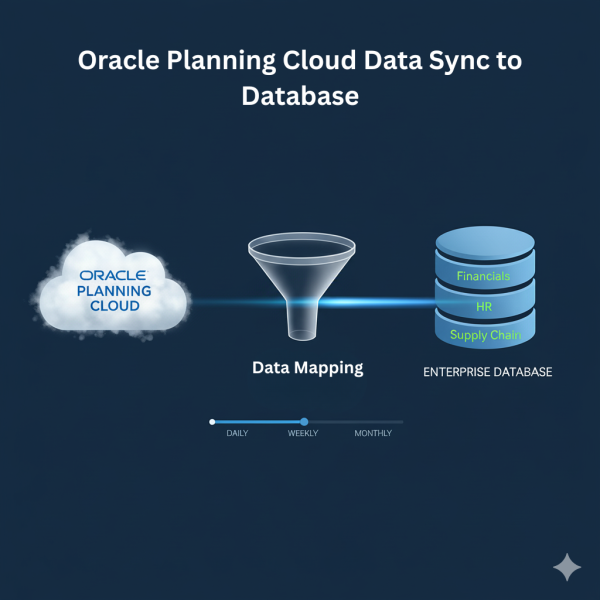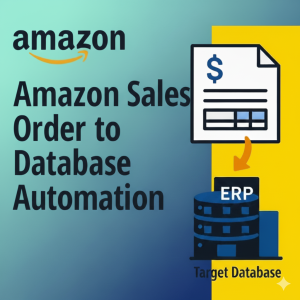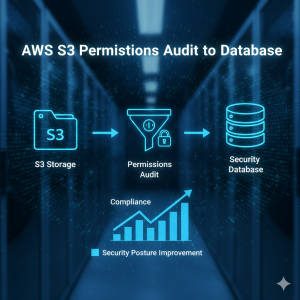90% Efficient-Oracle Planning Cloud Data Sync to Database
$0.00
| Workflow Name: |
Oracle Planning Cloud to Database sync |
|---|---|
| Purpose: |
Centralize planning & budgeting data in Oracle DB |
| Benefit: |
Automates extraction and structured loading to DB |
| Who Uses It: |
FP&A teams; Finance Ops; BI Analysts |
| System Type: |
Planning System / Database |
| On-Premise Supported: |
Yes |
| Supported Protocols: |
REST; JDBC |
| Industry: |
ERP; Supply Chain; Retail; Manufacturing |
| Outcome: |
95% faster sync; zero manual errors; fully up-to-date category hierarchy |
Table of Contents
Description
| Problem Before: |
Manual exports cause delays & inconsistent financial data |
|---|---|
| Solution Overview: |
Automates extract ? transform ? load into Oracle DB |
| Key Features: |
API extraction; schema mapping; bulk DB write |
| Business Impact: |
Faster reporting cycles & improved data reliability |
| Productivity Gain: |
Eliminates repetitive data handling by finance teams |
| Cost Savings: |
Cuts manual effort and reduces reporting overhead |
| Security & Compliance: |
Ensures consistent; auditable data flows |
Oracle Planning Cloud Data Sync to Database
Automate Oracle Planning Cloud data extraction and synchronization to your database. This no-code workflow ensures accurate, real-time data updates, reducing manual effort and errors while accelerating planning and reporting processes.
Smart Data Mapping & Validation
The system intelligently maps and validates key data fields, such as financial plans, forecasts, and cost structures. It standardizes and enriches the data before updating your database, enabling faster, error-free reporting and 90% quicker insights for operational and strategic decision-making.
Watch Demo
| Video Title: |
Integrate files from Oracle Database to Oracle UCM Cloud |
|---|---|
| Duration: |
12:20 |
Outcome & Benefits
| Time Savings: |
Cuts reporting time by 60?80% |
|---|---|
| Cost Reduction: |
Reduces manual workload & integration costs |
| Accuracy: |
Eliminates human errors in financial data |
| Productivity: |
FP&A teams process more cycles with same staff |
Industry & Function
| Function: |
FP&A; Finance Ops; BI |
|---|---|
| System Type: |
Planning System / Database |
| Industry: |
ERP; Supply Chain; Retail; Manufacturing |
Functional Details
| Use Case Type: |
Financial data consolidation |
|---|---|
| Source Object: |
Forecasts; Budgets; Cost Centers |
| Target Object: |
Oracle DB financial tables |
| Scheduling: |
Hourly / Daily |
| Primary Users: |
FP&A; Finance Ops; BI Analysts |
| KPI Improved: |
Reporting speed; FP&A accuracy |
| AI/ML Step: |
Optional anomaly checks |
| Scalability Tier: |
Enterprise-grade workflow |
Technical Details
| Source Type: |
Oracle Planning Cloud API |
|---|---|
| Source Name: |
Oracle Planning Cloud |
| API Endpoint URL: |
https://HyperionPlanning/rest/v3/ |
| HTTP Method: |
GET |
| Auth Type: |
Basic Auth / Oauth |
| Rate Limit: |
Based on Oracle API policies |
| Pagination: |
Token/offset pagination |
| Schema/Objects: |
Forecasts; Budgets; Allocations; Cost Centers |
| Transformation Ops: |
Mapping; type casting; schema alignment |
| Error Handling: |
Retry & fail-safe logging |
| Orchestration Trigger: |
Scheduled job execution |
| Batch Size: |
API batch pull size per run |
| Parallelism: |
Multi-threaded API calls |
| Target Type: |
Oracle Database |
| Target Name: |
Oracle DB schema |
| Target Method: |
Bulk insert via JDBC |
| Ack Handling: |
DB write success confirmation |
| Throughput: |
Thousands of rows per minute |
| Latency: |
Sub-minute sync depending on volume |
| Logging/Monitoring: |
API logs; DB logs; workflow metrics |
Connectivity & Deployment
| On-Premise Supported: |
Yes |
|---|---|
| Supported Protocols: |
REST; JDBC |
| Cloud Support: |
Cloud or hybrid deployment |
| Security & Compliance: |
Ensures consistent; auditable data flows |
FAQ
1. What is the goal of Oracle Planning Cloud data sync?
The goal is to automate the transfer of planning data from Oracle Planning Cloud to your database, ensuring accuracy, consistency, and timely updates.
2. How does the system validate and map data?
The workflow extracts key fields such as financial plans, forecasts, and cost structures, validates them, and maps them to the correct database tables before syncing.
3. Can data sync run in real time or on a schedule?
Yes. The sync can be executed in real time for immediate updates or scheduled in batches for periodic integration.
4. What happens if an error occurs during sync?
Errors such as missing or mismatched data are logged; the system retries automatically or routes the records for manual review.
5. Does the platform support large-scale data sync?
Yes. The platform can handle high-volume datasets, ensuring accurate and timely integration without impacting performance.
6. What are the benefits of automating Oracle Planning Cloud data sync?
Automation reduces manual effort, ensures data accuracy, speeds up reporting, and improves decision-making for planning teams.
Resources
Case Study
| Customer Name: |
Global SaaS & Manufacturing Enterprise |
|---|---|
| Problem: |
Slow; error-prone item category updates between Planning Cloud and Database |
| Solution: |
3-step automated workflow to extract; transform; and sync item categories |
| ROI: |
3 FTEs saved; 2-month payback |
| Industry: |
ERP; Supply Chain; Retail; Manufacturing |
| Outcome: |
95% faster sync; zero manual errors; fully up-to-date category hierarchy |






